Do you need more light in your hallway or bedroom? Do you need to add some mood lighting to your living room, but you don’t have electricity or light switches already installed? Don’t worry! Atmospheric indirect light on the ceiling is easily achieved with a ready-made LED profile. Here we present an installation for indirect light in the living room, bedroom and study.
Indirect light on the ceiling, installation options
Often we have a situation where we need more light in a room, but there is no light switch or electricity waiting in the ceiling. There’s usually a light socket in the middle of the room, but running a wire from it across the room to the ceiling may not be the prettiest option. In addition, it should be remembered that indirect LED lighting solutions also require a transformer, which should be hidden, e.g. behind the service hatch. So how to install indirect light on the ceiling in a nice way? In this article we will discuss a situation where, during the construction of a house, a wire had been left in a corner of the service hatch waiting for an LED strip. In other words, the construction and design phase had already taken into account the installation of the future LED profile. The installation of indirect light can also be done as a full retrofit.
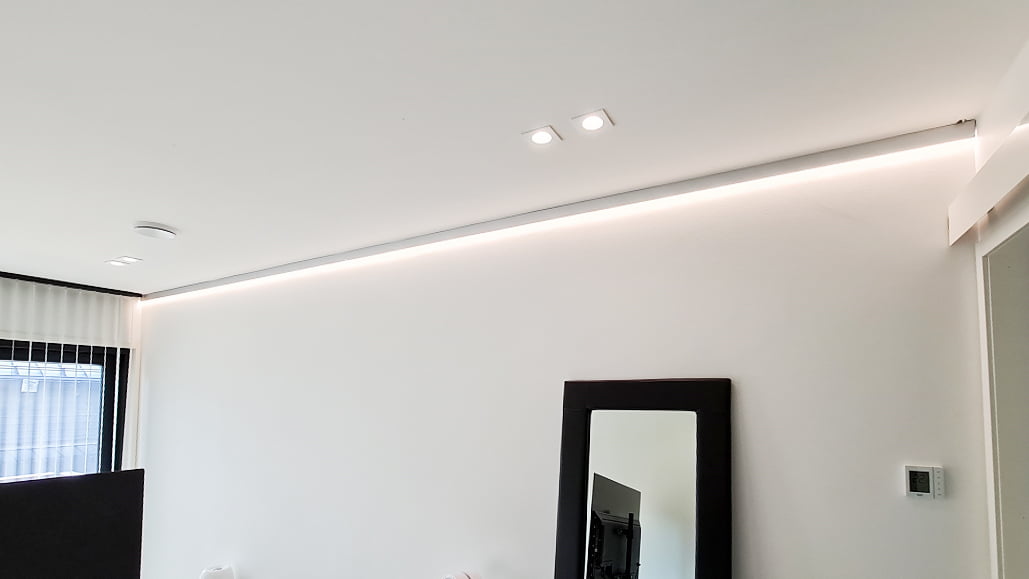
The product used was the INDIRECT2 led profile, where only the bottom surface of the profile was fitted with a SOLO CCT 14,4W/m LED strip with colour temperature control. This LED strip provides good light output, which is also fully dot-free and temperature-adjustable, meaning you can adjust the lighting from warm (2700K) to cool (5500K) according to your needs and taste.
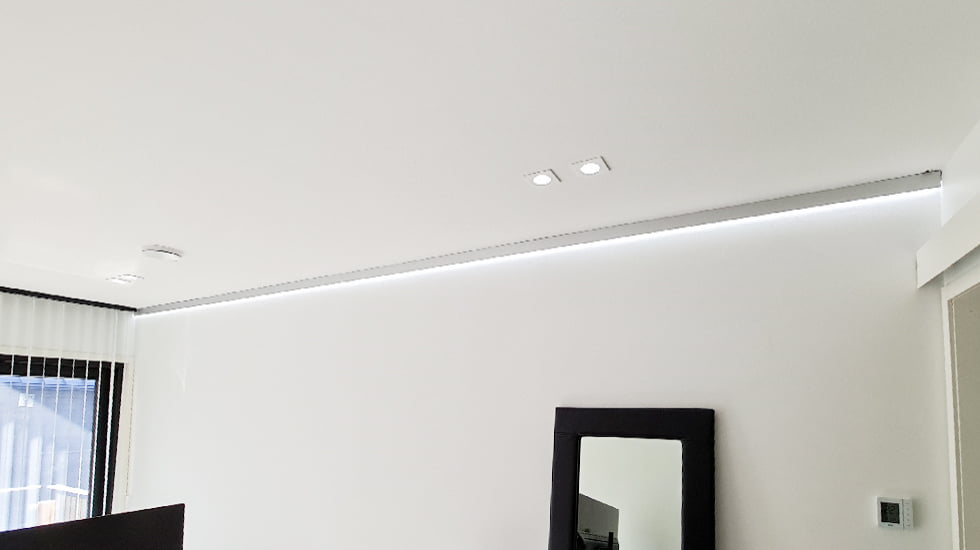
Indirect light for the ceiling made in the LedShop or at home
Here is a summary of the steps involved in retrofitting a profile:
A) The preparatory tasks are:
- decide on the installation site
- measure the length of the lighting required and the distances to the nearest power supply / socket for connecting wires
- choose the right LED strip for your needs,
- aluminium profile and
- control, which includes a transformer and a controller.
B) Pre-installation machining includes the following steps:
- Cutting and machining of aluminium profile(s) for connecting cable
- Machining the Led strip to the correct length, and soldering the connecting wire to the end of the strip
- Fixing the Led strip to the aluminium profile (for the first 2.5 m section if the total length exceeds 2.5 m)
C) Installation on site includes the following steps (when using wireless luminaire control):
- Fixing the profile brackets to the wall
- Pressing the first profile into the brackets
- Printing of extension fires on wall brackets
- Gluing the rest of the LED strip in place and installing the cover
- Running the wire in a corner under the protective gutter to the transformer
- Connecting the transformer to the electricity supply e.g. with plug
- Pairing the wireless control between the controller and the transformer.
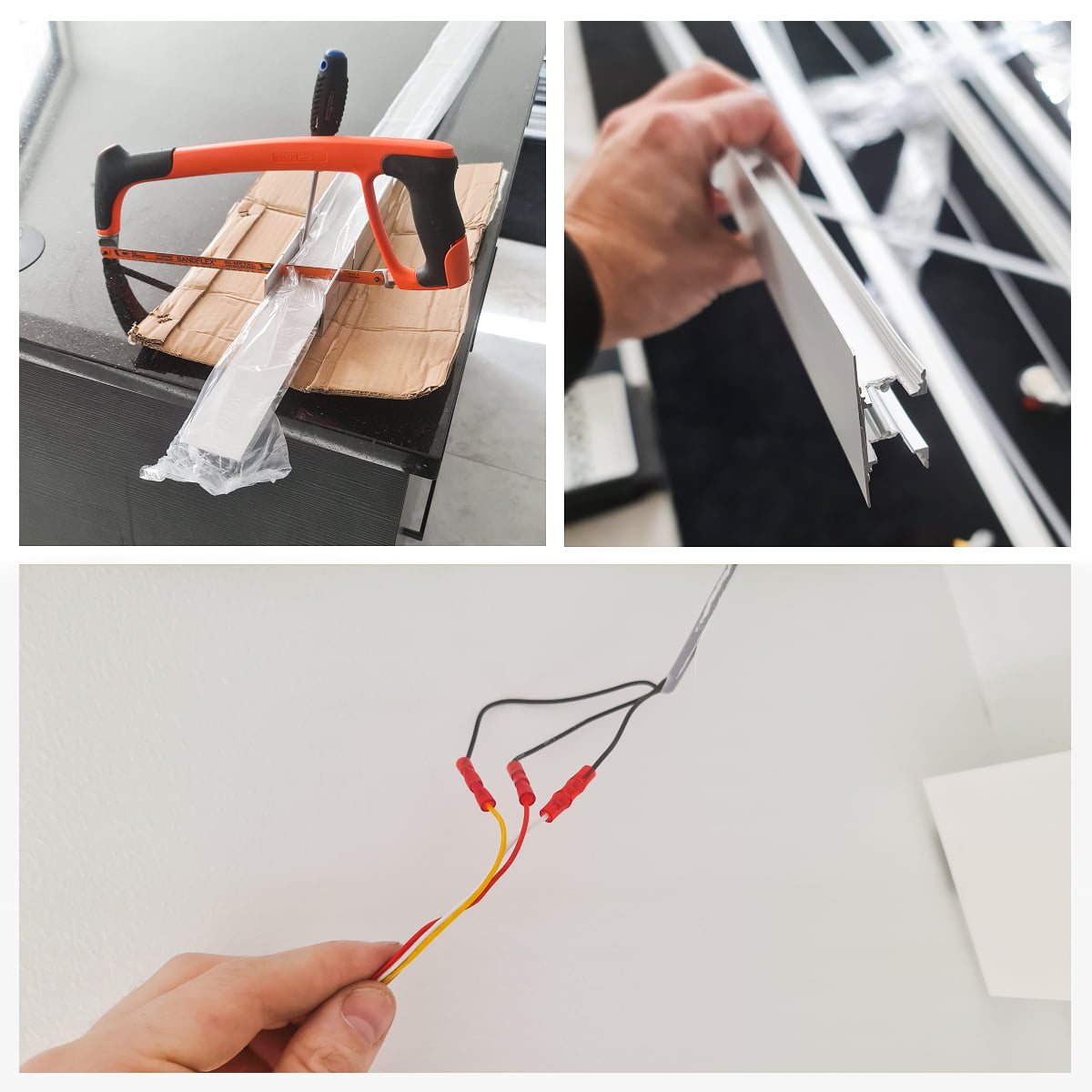
By taking into account in advance the necessary power supplies for indirect lighting, the cable is ready and waiting at the end of each installation site. The other end of this connecting cable was ready for the transformer, which only needed a mains connection. A typical place for a transformer is a service hatch, but if nearby, as in this case there was a closet where a flush mounted LED panel 300×300 lamps were installed, it can easily be used as a service hatch.
A wireless control transformer to control the light temperature or RGB LUMINAires (Children NOTE!! =)) does not require wiring to a switch, as the luminaires are controlled entirely wirelessly between the transformer and the controller. More on that later.
On-site installation
So the first thing to know was how long the indirect light would be on the ceiling. The profiles were cut with a metal saw, but the site has a circular saw with a wooden blade, so it is also possible to cut the profiles with a circular saw, because aluminium is soft. The profile’s feed head had to be edited with side cutters to remove the pieces. This is because the top wire and its connectors (apico or solder) get a good space in the upper groove of the profile and from there the wire goes to the LED strip.
Next, the bracket locations were marked on the wall using a small piece of profile as a template to make sure everything was level. The point to note is that a flat roof is never straight and there will be variations and if each bracket is measured to the nearest millimetre from the ceiling, they may not be in a straight line…
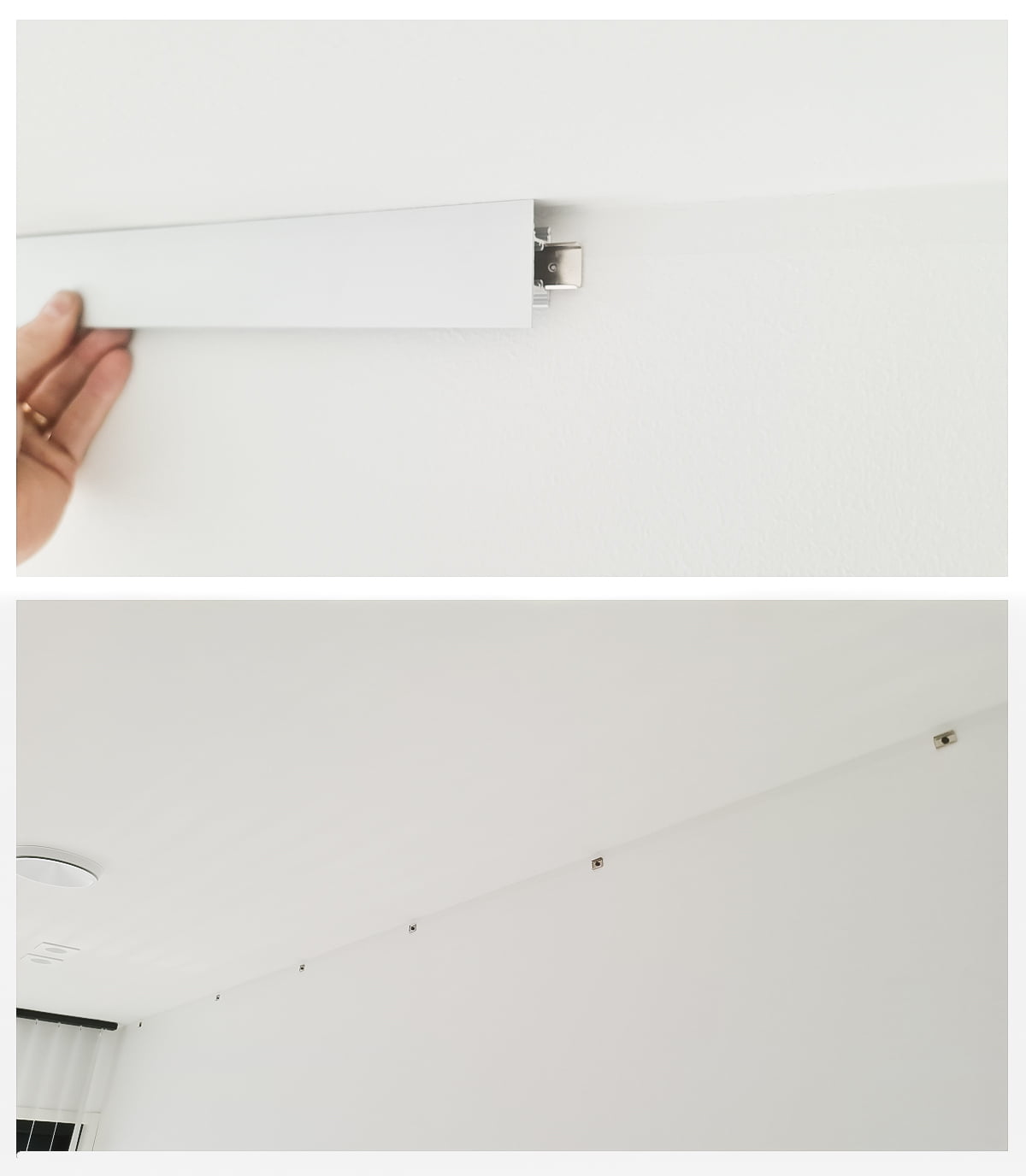
Next, the LED strip was attached to the wire hanging from the ceiling and the extra wires can be easily inserted into the groove by simply pressing the first profile into place on the wall.
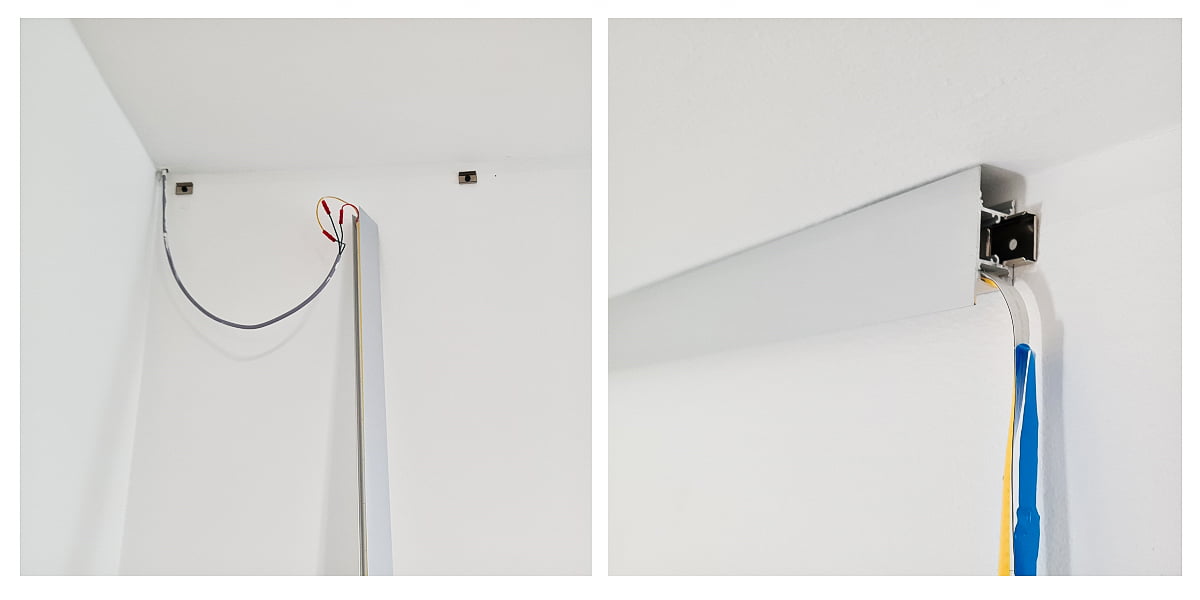
Once the profiles were attached to the wall, the double-sided tape could be removed from behind the LED strip and more LED strip could be glued in place. Then the first piece of profile cover could be slid or pressed into place. Note that use a cut-off cover at the beginning to the end, so that the cover and aluminium seams are not at the same point.
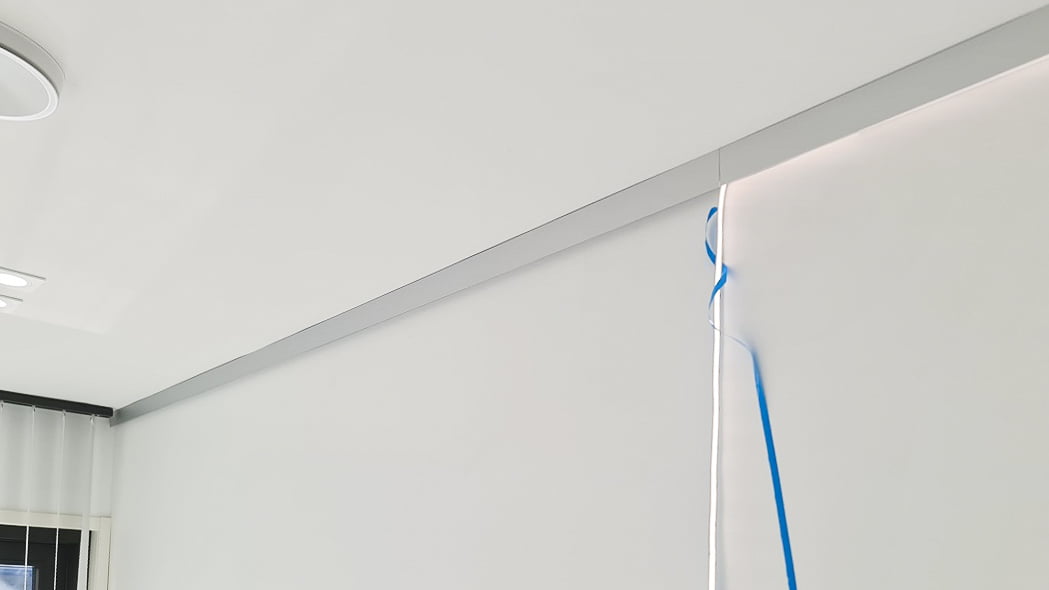
Then the rest of the indirect profiles were pressed into place on the wall and the end of the LED strip was glued in place with its own tape. Finally, the rest of the profile protection cover in place. Next, the wires were connected to the transformer for testing.
Versatility with easy adjustment of colour temperature
The colour temperature of the light can be freely adjusted to the desired Kelvin level with an easy-to-use wireless controller. For example, warm dimmed light in the evening to calm down, or a slightly neutral and brighter light when it’s time to clean up or refresh yourself. The controller is a Zigbee controller, which was paired with a 24V 100W Zigbee transformer. The transformer is supplied with constant power, but if necessary it can be cycled on/off via a basic on/off switch as our transformers have an internal memory.
If you want to time and program the light, you also need a Zigbee bridge or hub, such as Philips Hue or Samsung Smart Things. This site has Home assistant and Conbee2 turning on the lights at dusk automatically.
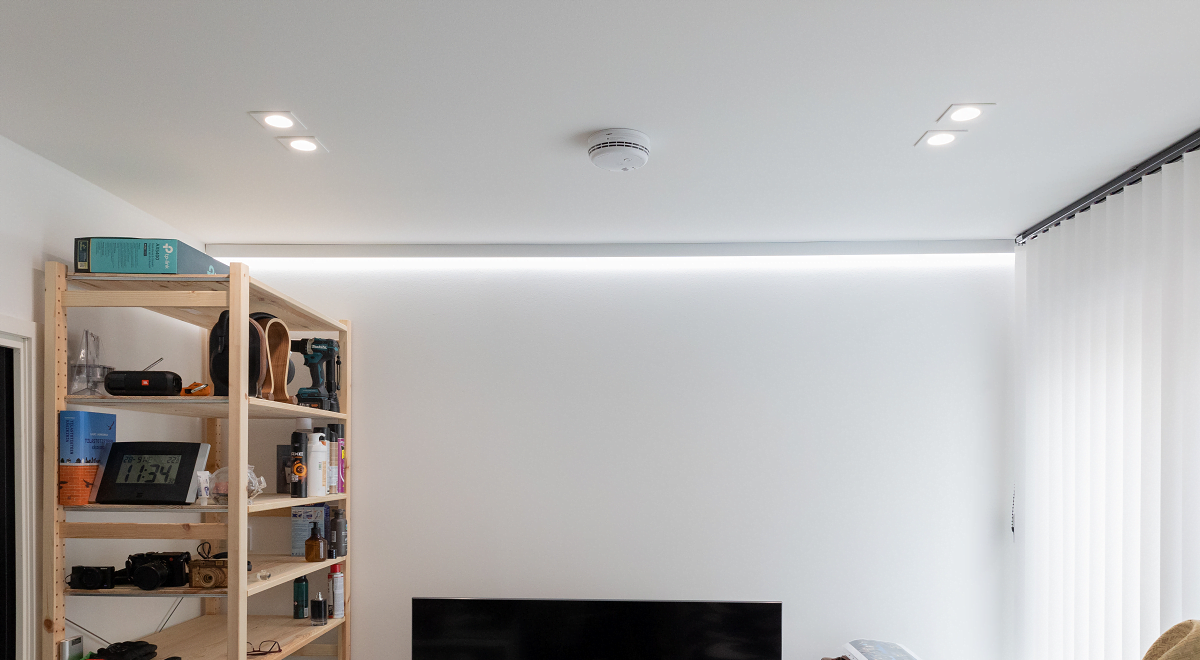
Light levels in the premises
Different amounts of light are needed in the hallway, living room or bedroom. In general, however, I can say that 14.4W per metre is sufficient to create a good atmosphere. So a very small amount of light is enough to guide the passage. The light can be too bright in the evening when it is at 100% power and therefore the dimming is harsh. In practice, for example, a 5m trip will produce 72W of power, but in the evening it will be kept at 30%. This also means electricity savings, as the Led ribbon dimmed only approx. 20W! Still, the amount of light is sufficient for walking down the corridor or watching TV.
Indirect light in the ceiling as a retrofit?
Here we went through the installation against the ceiling where the wire comes ready made, but if that were not the case, it would go down in the corner towards the floor instead of the ceiling and the transformer would just come to the plug there. A white wire grab, available at any hardware store, protects the wire in the corner. When installed in this way, it becomes a real afterthought when the transformer on the floor is hidden behind a chest of drawers or bed. Since the control is wireless Zigbee, you can freely position the button yourself.
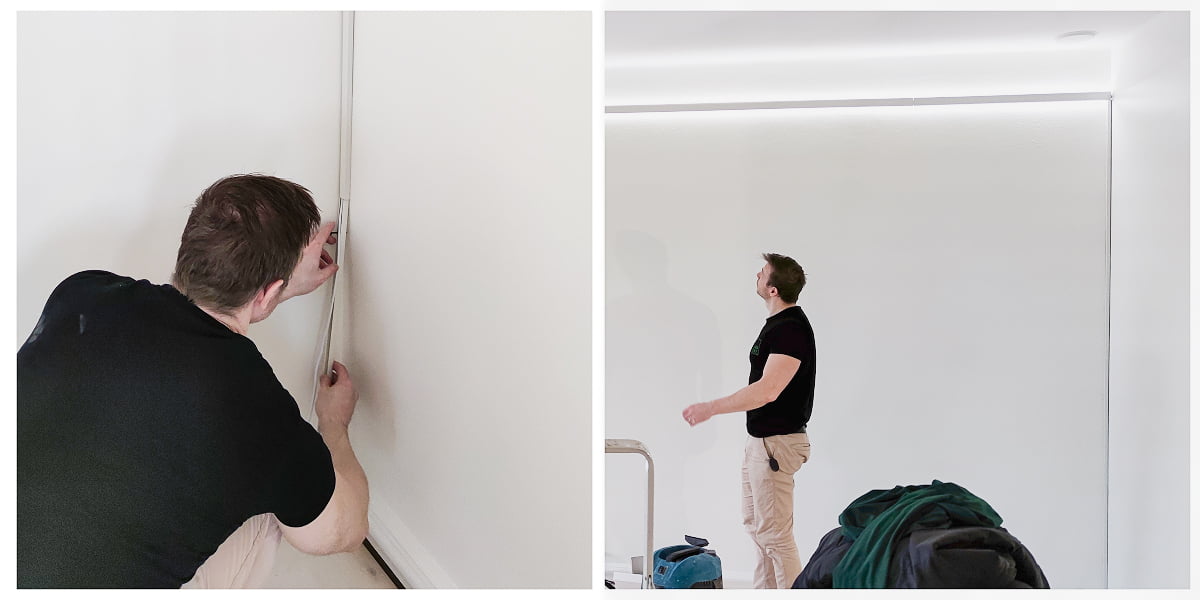
Indirect light on the ceiling is therefore easy to install and decorate with. Indirect2 profile also available in Black
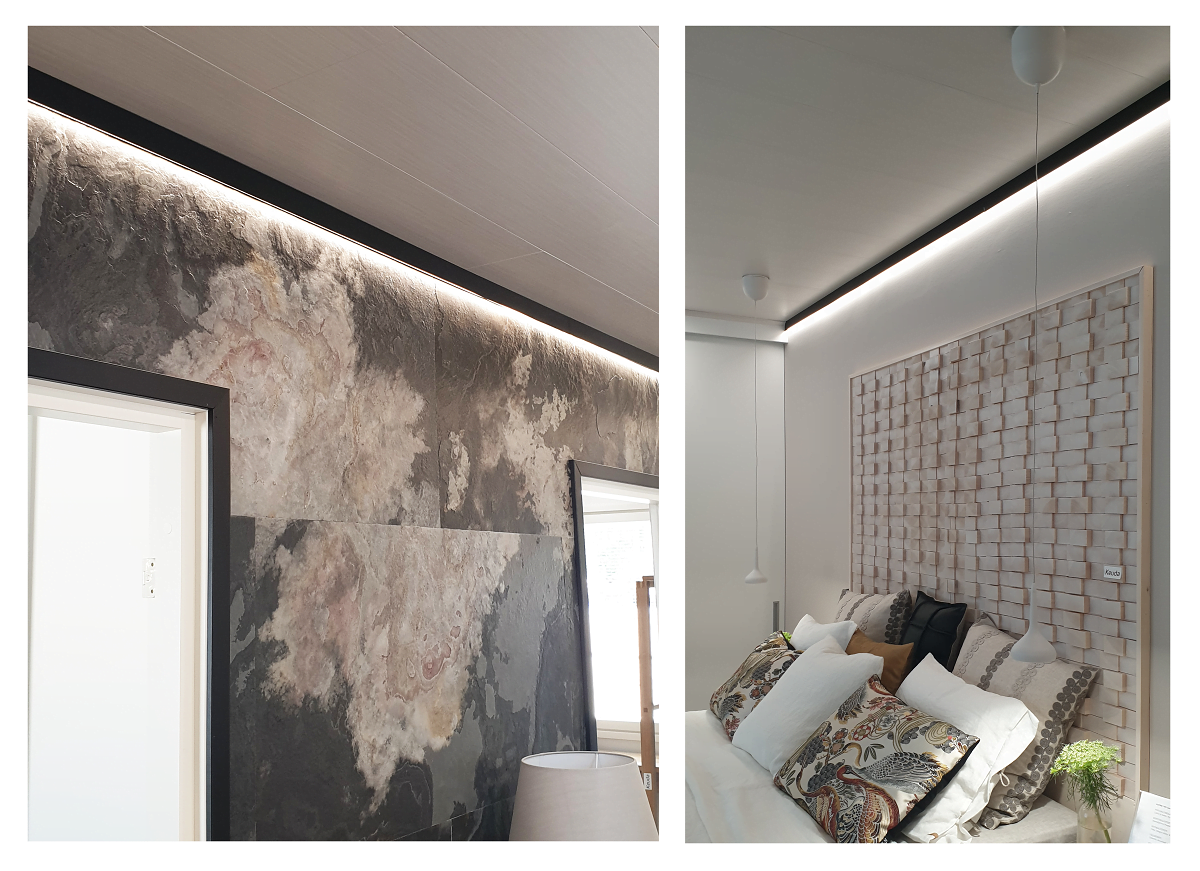
You can also put 2 led strips in the same INDIRECT2 profile if you need more light. There’s another article on installing it where we go through it
In this article: indirect light for the living room.
Also read more about our LedPaja service if you are interested in custom-made LED strip lighting, and ask for a quote for an LED profile with installation.

